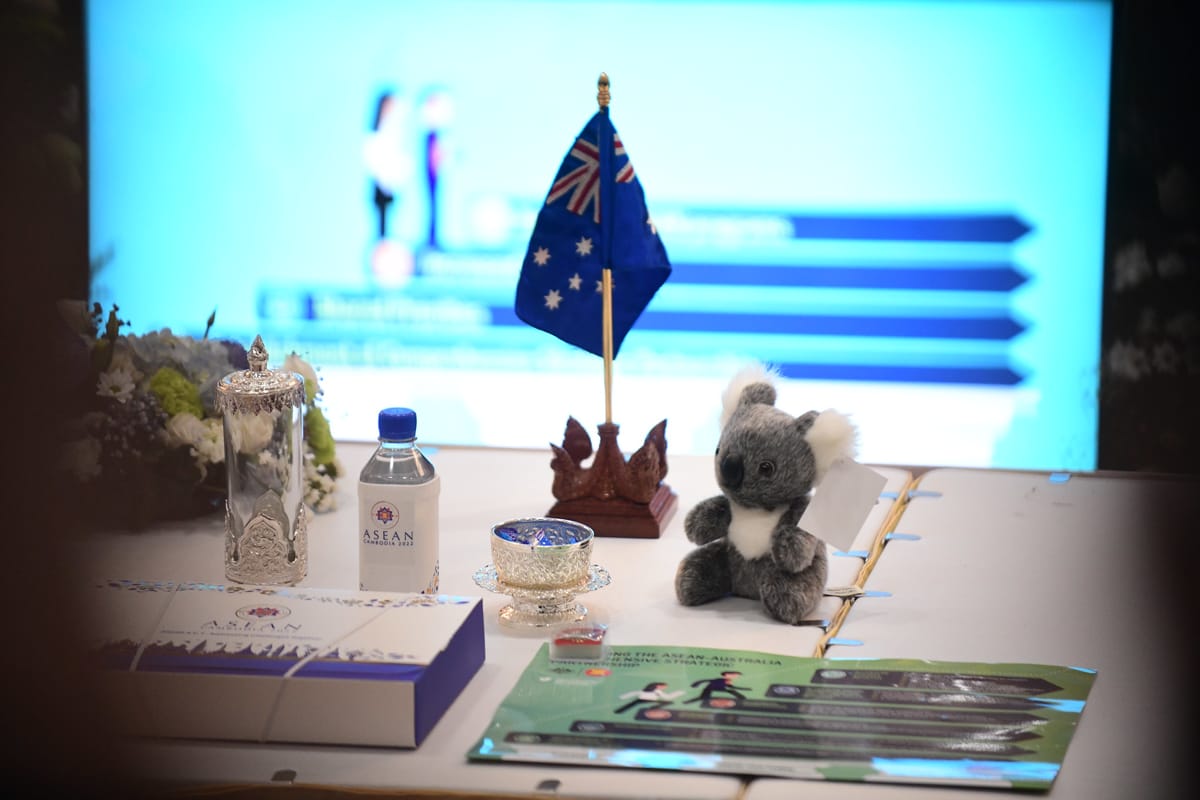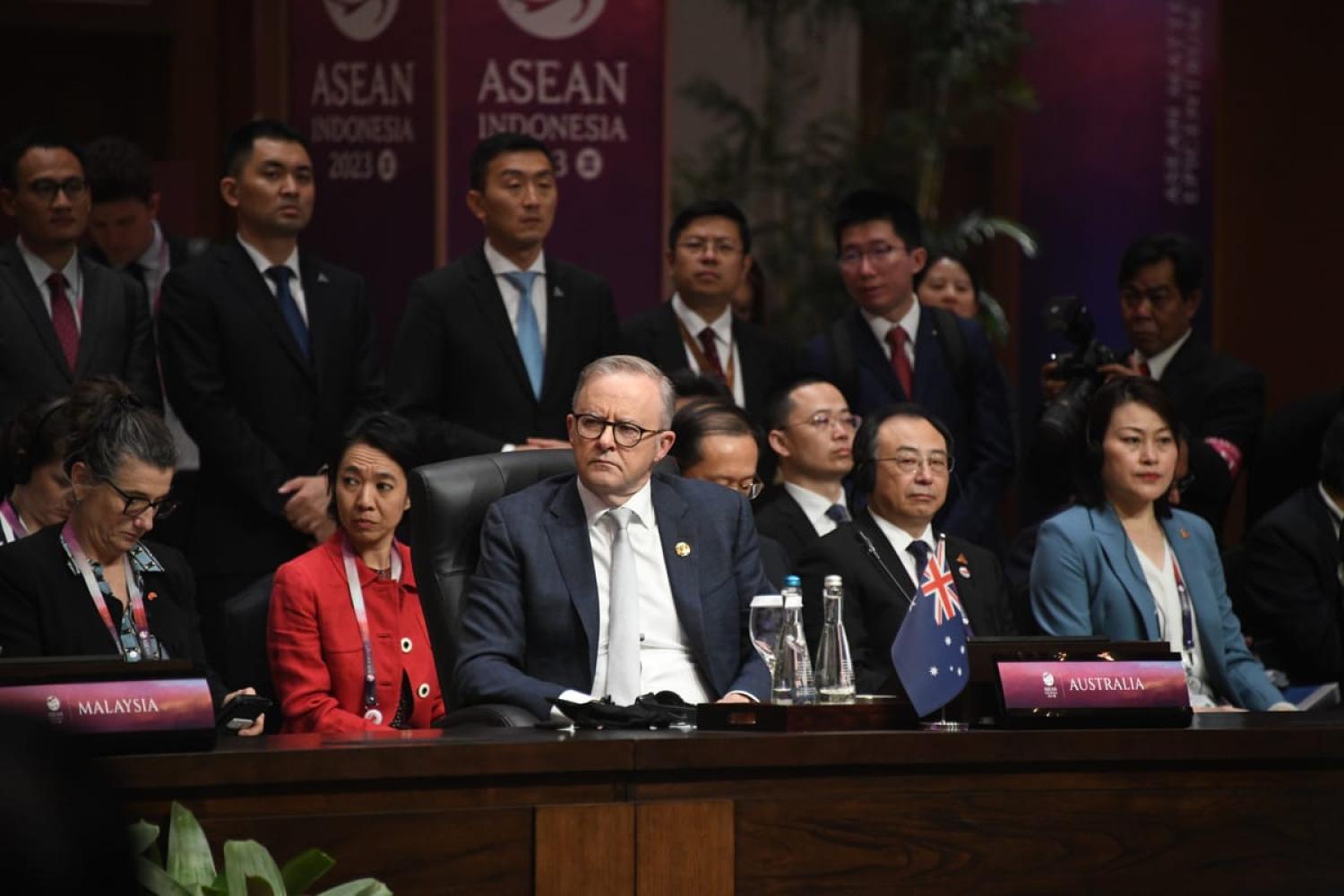Legacy land
One of the curiosities of former Prime Minister Malcolm Turnbull’s memoir of his time in office is that he makes very little of the 2018 gathering of Southeast Asian leaders in Sydney, which was the largest diplomatic event he hosted. It is worth reflecting on now because last week Turnbull was disputing his successor Anthony Albanese’s claim to be making the first Australian leader’s bilateral visit to the Philippines for two decades, something Turnbull says he did in 2015 and 2017.
Putting visit definitions aside, Albanese was clearly crafting what Turnbull claims, a legacy of taking Australia’s closest Asian neighbours seriously. He has just released what he says is “the most substantial piece of work ever done” by Australia on Southeast Asia ahead of hosting his own summit of Association of Southeast Asian Nation (ASEAN) leaders in Melbourne next March.
The report, Invested: Australia’s Southeast Asian Economic Strategy to 2040, has been welcomed for bringing a whole of government perspective to the need for more Australian trade and investment with what is forecast to become the fourth largest economic zone in the world. And it packs a hefty, carefully sequenced and cross-referenced 75 recommendations for government action.
The government has partially responded with a plan to create private/public sector investment teams to identify and then risk assess potential projects for Australian investors. More interestingly, it has committed to a public annual review by the foreign and treasury ministers of what has been achieved.
And Foreign Minister Penny Wong has fleshed out Albanese’s claim to the most substantial work by declaring:
“We know that too much of what has happened to Southeast Asia has been underdone by successive Australian Governments … The government sees this as a very important part of not only prosperity but assuring Australian security, economic strength, military deterrence and diplomatic reassurance.”
Paper trails
Whether this is the most substantial work on an important national objective depends a bit on context and timing. It relies on more than 200 public submissions and 750 individual engagements across the region for a 200-page report.
But in 1992–94, the Department of Foreign Affairs and Trade produced the 300-page Australia’s Business Challenge in Southeast Asia in the 1990s, which drew on five consultant’s reports and a survey of 126 businesses; a 180-page report on Australia and the then new ASEAN Free Trade Area; and a 100-page analysis of missed investment opportunities in the region.
The opening words of the main report back then sound eerily familiar:
“The rapid onset of industrialisation in the region of the world closest to Australia brings with it important challenges for business as well as for foreign and trade policies. The task is to build on Australia’s assets and strengths to enable us to become an important part of the great transformation that is underway there.”
And the latest report is singing the same tune:
“Southeast Asia is at the centre of global growth. The region presents major economic opportunities for Australian business over coming decades … For Australia, an active, whole-of-nation effort will be required to make the most of current and emerging opportunities.”
Report substance aside, the important point here is that Australian governments have a long track record of rediscovering Southeast Asia and, in respect of economic engagement, overlooking how businesses have been on the ground there for a century.
The year 1932 was a banner year in this respect with separate reports by government development consultant Herbert Gepp and Queensland academic Alexander Melbourne, who chaired the Commonwealth Advisory Committee on Eastern Trade. They backed diversification from Britain, more diplomats in Asia, better promotion of Australian goods, Asian-Australian joint ventures, better banking support for Asian business, and consistent long-term Asian economic policies. Melbourne’s words echo down the years: “Geographically they are Australia’s nearest neighbours, and Australia would profit considerably from an increased personal contact between Australians and the people of the East.” These reports contributed to the creation of what is now Austrade which faces yet more structural changes due to the new recommendations.
Jumping past several other such efforts over the years forward to the Turnbull era, Austrade produced Why ASEAN and why now in 2015 which was repurposed as ASEAN now. Insights for Australian Business in 2017, ahead of the summit. They were less substantial than the latest exercise at less than 100 pages and acknowledged only a few dozen institutions for assistance.
But the 2017 message from Turnbull was, well, familiar: “Australia and ASEAN’s futures are closely linked. In the current climate of global change, we must all take on greater responsibility for leadership and work more closely together.”

To be sure, this is not all about politicians or foreign policymakers reinventing wheels. Businesspeople can be worse – although they have money at stake.
Here’s the Repco company and Export Development Corporation chair Charles McGrath in a 1968 report mostly on Southeast Asian business engagement: “Why the emphasis on Asia? There is no doubt that these countries present opportunities for expansion of our exports, but Asia is very much our natural market. Geography is more important than history.”
Or a generation further on, here is then Business Council of Australia chair and BHP chief executive Brian Loton from a two-part 200-page 1992 investigation of broader Asian prospects:
“There are already many individual Australians and Australian firms who have successful commercial dealings in the region … Nevertheless, more needs to be done: the spread of our interests is too narrow; and our performance to date does not meet the opportunity.”
Last chances
The fundamental change in the latest report is the way the opportunities have both diversified into new fields such as digital services and have grown due to Southeast Asia’s relatively higher growth. For example, it suggests that two-way trade could triple by 2040 to $534 billion with a small increase in the current annual growth rate to 6.3%.
And there is a not entirely new but nonetheless more compelling argument that: “If Australia fails in this, it will not be possible to maintain the status quo as the Southeast Asian economies grow relative to the Australian economy, and other competitors intensify their trade promotion and investment activities.”
The other big change from the predecessors is the way Australia has become a capital exporting nation thanks significantly to its superannuation reserves of $3.5 trillion, which is a reversal of the past when Australia imported capital to develop its resources. But there is little examination of whether private investors from longstanding Asian players like LinFox and new companies such as Sun Cable might provide the “patient” capital that a new Asian engagement push needs.
But what is missing is an appreciation that Australian businesses have a much longer track record in parts of Southeast Asia than the contemporary narrative generally allows for. A better communication of that might make this latest version of an old quest less challenging to accept for both Asian partners and new Australian players alike.

